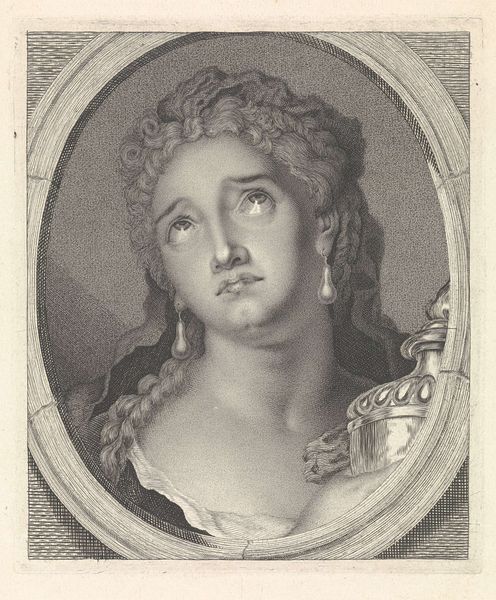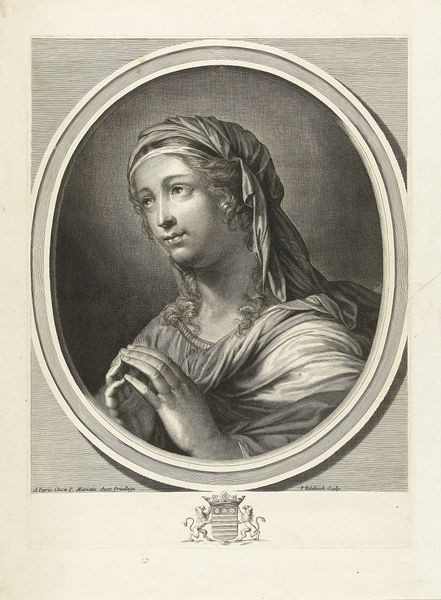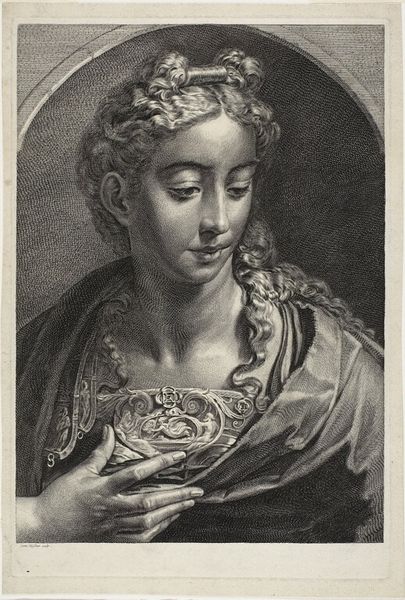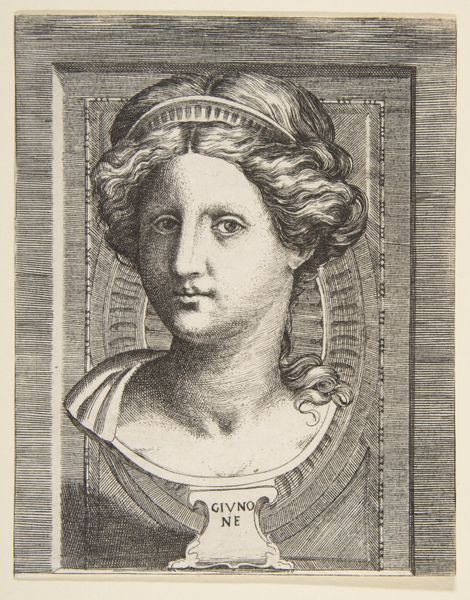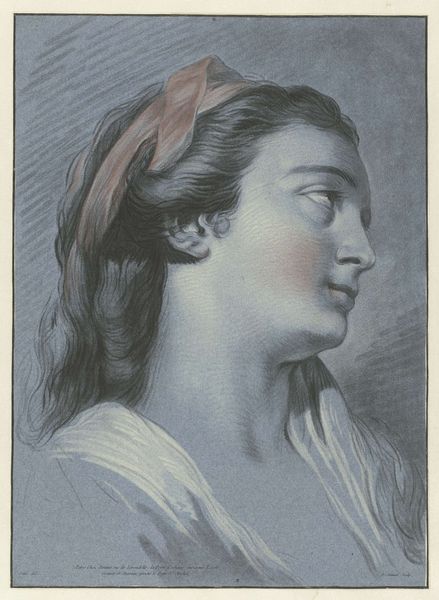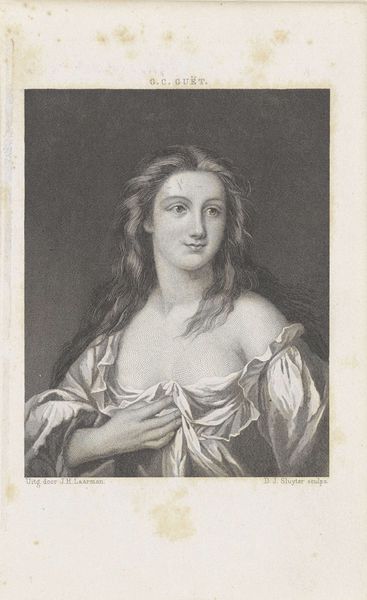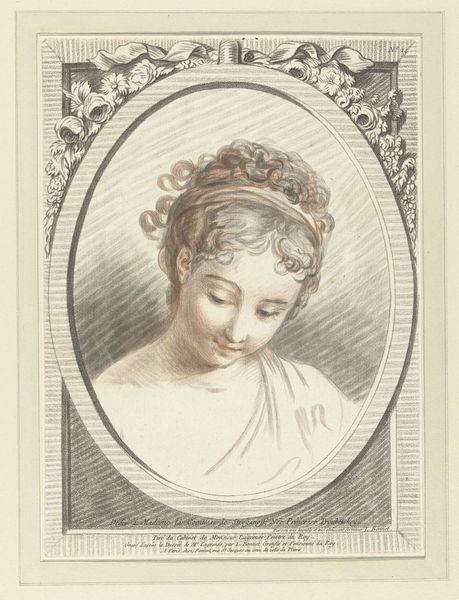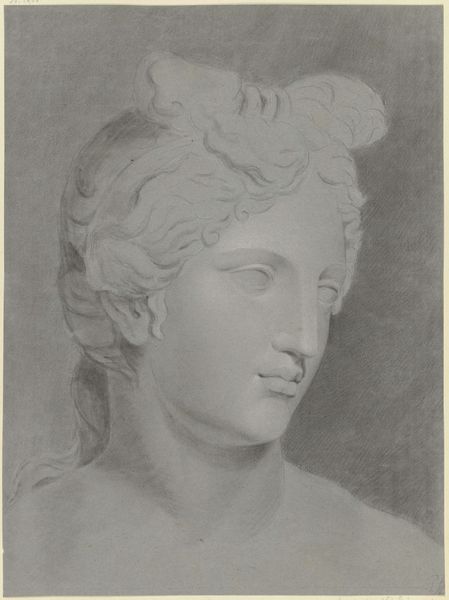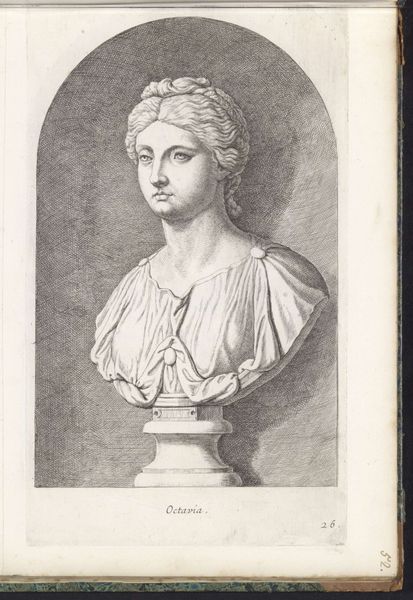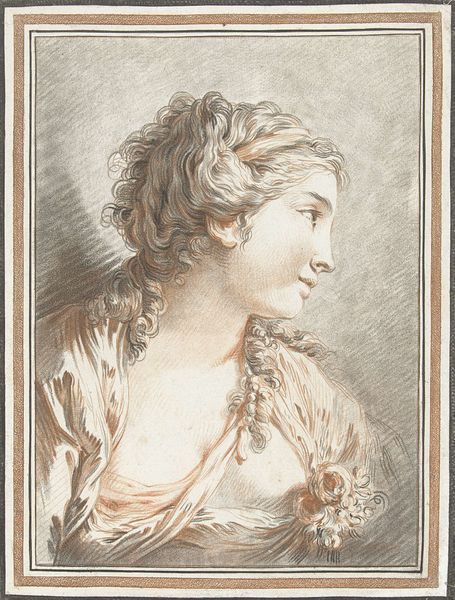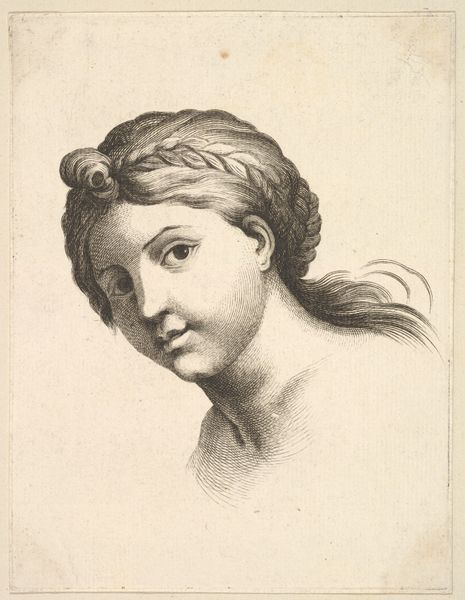
Adrienne Lecouvret in de rol van Cornelia met een urn met de as van haar man Pompeus 1716 - 1789
0:00
0:00
Dimensions: height 219 mm, width 186 mm
Copyright: Rijks Museum: Open Domain
Editor: So, this is "Adrienne Lecouvret in de rol van Cornelia met een urn met de as van haar man Pompeus," by Pieter Lyonet, made sometime between 1716 and 1789. It's a drawing or engraving on paper. It strikes me as incredibly melancholic – what do you see in this piece? Curator: I see a powerful intersection of performance, gender, and historical narrative. Lyonet captures not just a portrait, but a staged moment. Adrienne Lecouvret, a celebrated actress, embodies Cornelia, a Roman figure synonymous with virtue and grief. But who gets to perform grief, and for whose gaze? Think about the theatricality inherent in neoclassicism; it’s not just about form, it’s about constructing morality. Editor: So it’s not just about displaying sadness? Curator: Precisely. It is a very active depiction. Consider, the late 18th century saw significant social upheaval. Performances like this reinforced certain ideals about womanhood, loss, and civic duty. Was this performance of grief empowering or restrictive for women? Who did the story of Cornelia serve? Editor: I guess it's more complex than it appears at first glance. It is more than sadness. Curator: Exactly. The piece encourages us to question the narratives we inherit and the roles assigned to us, even within artistic representation. Editor: I never would have considered how performative grief can be, but that's fascinating. Curator: Seeing art through this lens offers such richer interpretations!
Comments
No comments
Be the first to comment and join the conversation on the ultimate creative platform.
